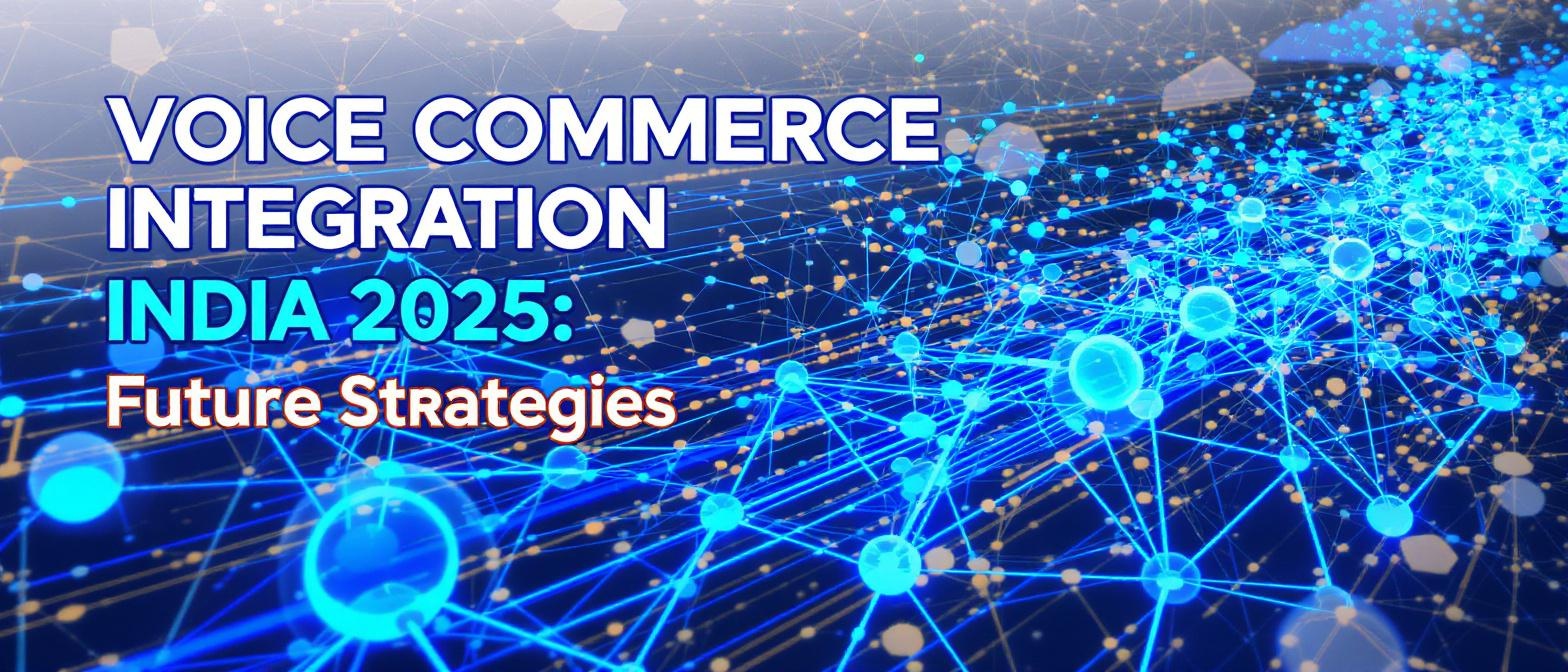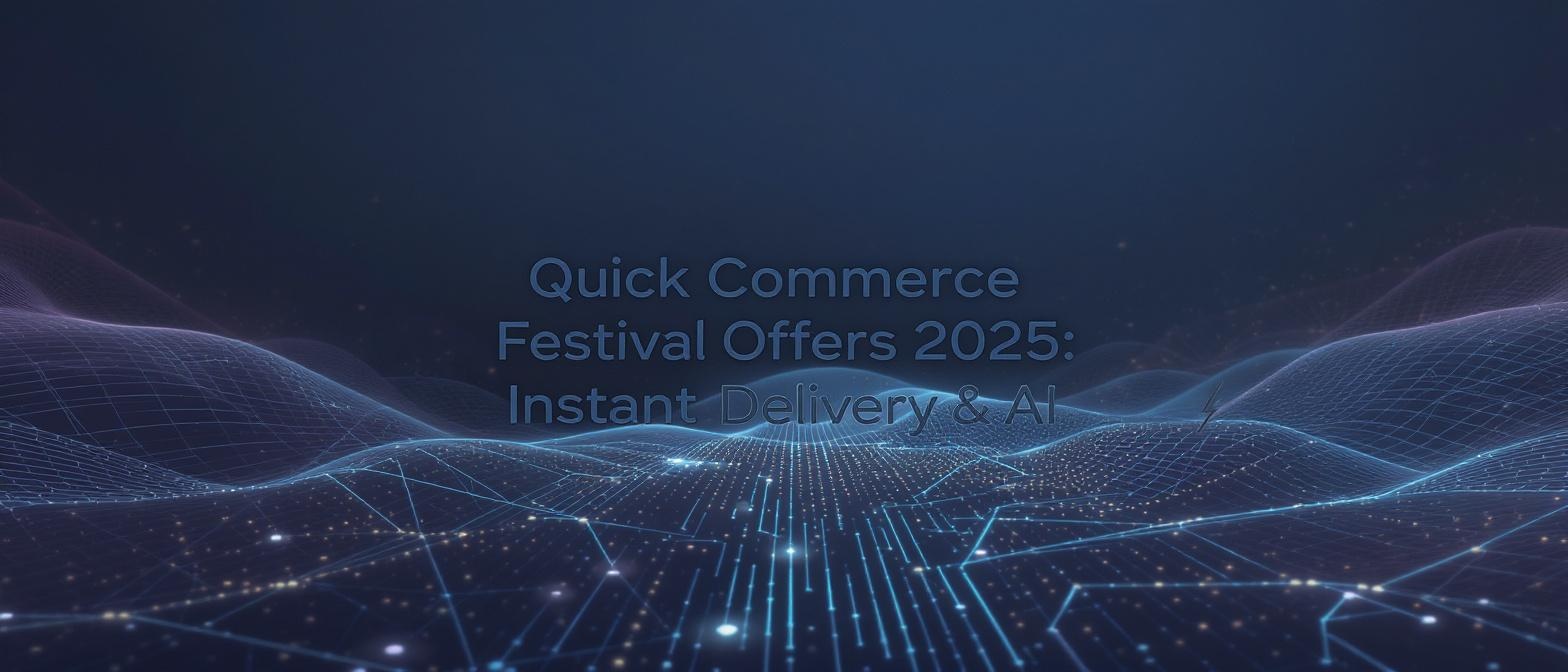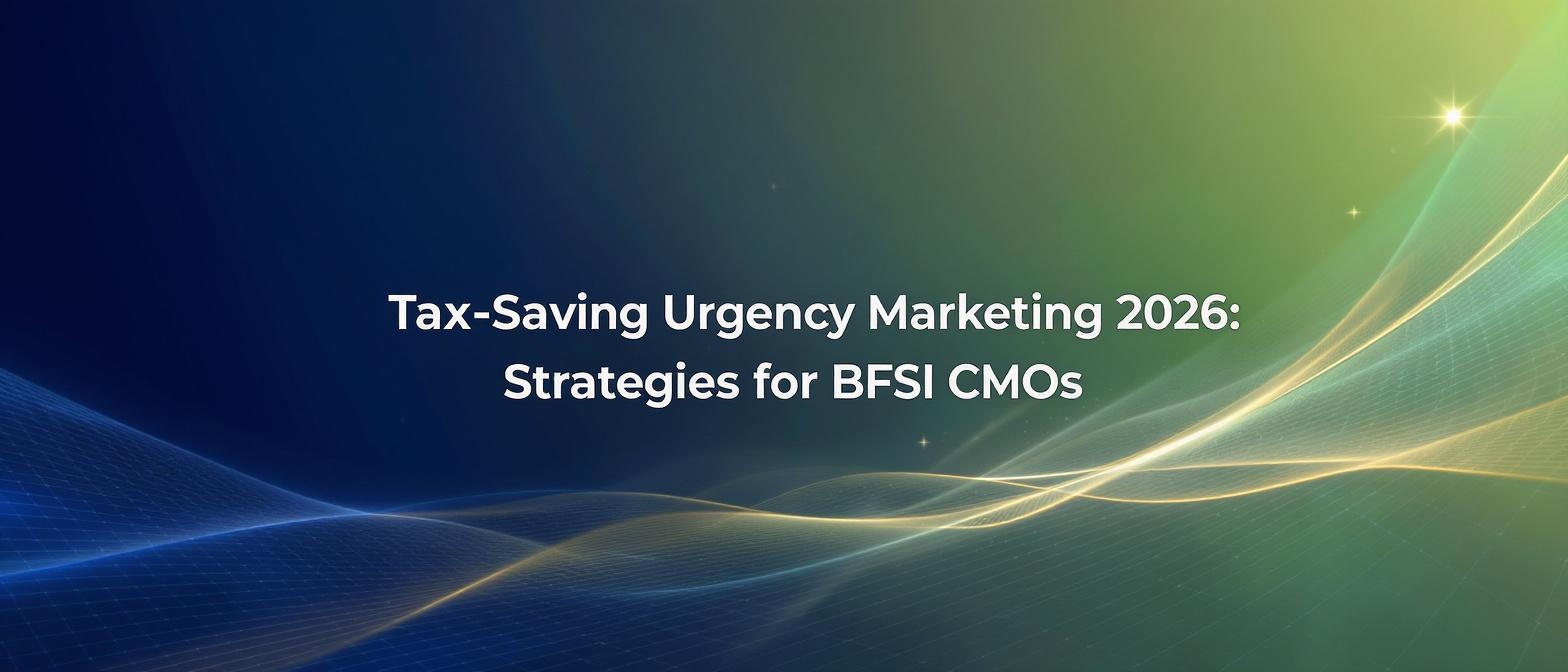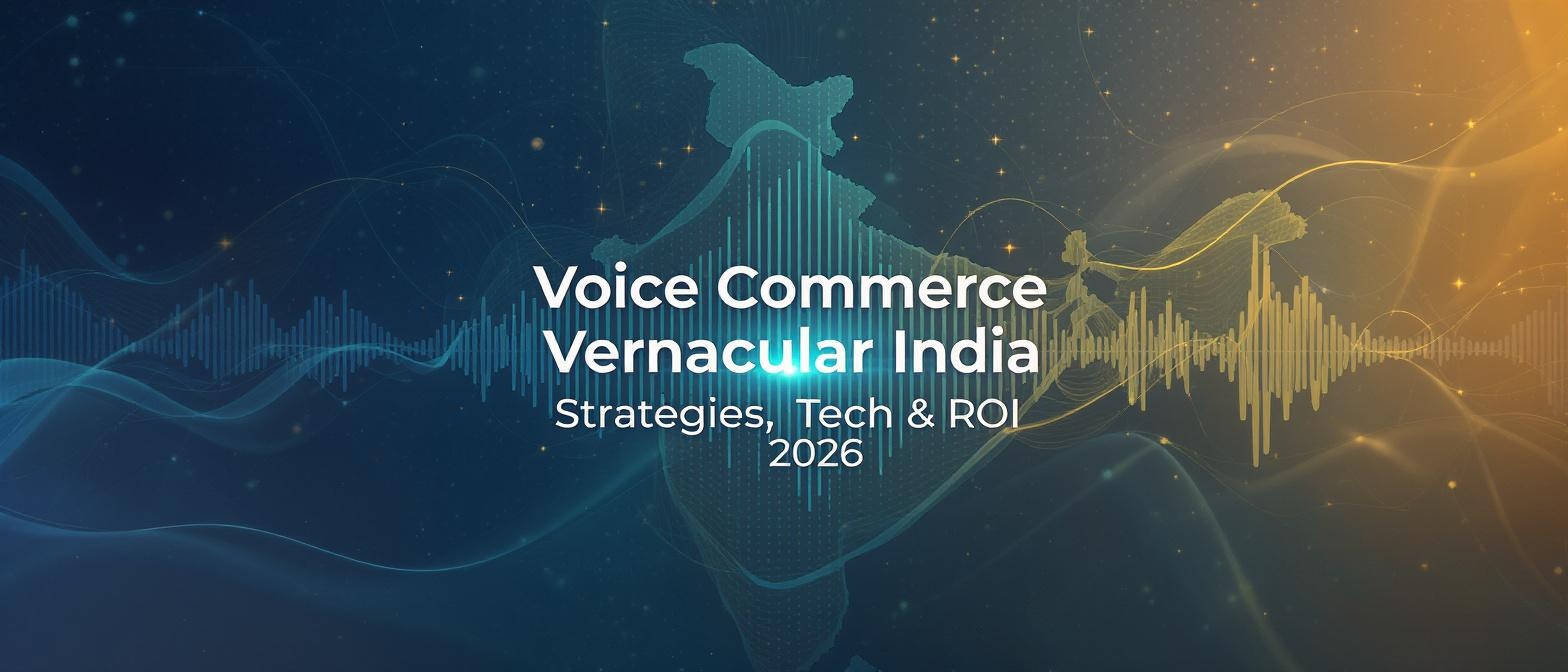Voice Commerce Integration India 2025: Strategies for Multilingual, AI-Driven Customer Engagement
Estimated reading time: ~14 minutes
Key Takeaways
- Voice commerce is rapidly evolving in India, fueled by high mobile penetration and multilingual needs.
- AI-driven personalization, including voice cloning, fosters deeper customer engagement and brand loyalty.
- A structured, phased approach is vital for successful enterprise-level voice commerce integration and scalability.
- Advanced platforms like TrueFan AI show the future of personalized voice and video marketing campaigns.
1. Introduction: The Voice Revolution in Indian E-Commerce
The next frontier of digital customer interaction is not typed; it’s spoken. Voice commerce integration in India for 2025 is rapidly evolving from a novelty into a strategic imperative for enterprises. This technology leverages voice-activated devices—from the smartphone in your pocket to the smart speaker in your living room—to enable users to search, browse, and complete purchases using natural-language commands. It represents a fundamental shift in how brands and consumers connect in an increasingly digital-first economy.
India’s unique landscape, characterized by immense linguistic diversity with 22 official languages and over 100 dialects, combined with massive mobile penetration, creates the perfect ecosystem for a voice-first revolution. Voice technology dismantles literacy and language barriers, making digital commerce accessible to millions of new users. Research underscores this imminent shift, projecting that a staggering 55% of Indian internet users will use voice search regularly by 2025, moving beyond simple queries to transactional commands. For enterprises, this signals a critical need for proactive enterprise voice technology adoption.
This guide delves into the strategies, technologies, and trends shaping the future of voice commerce in India. We will explore how businesses can create a seamless, AI-driven, and multilingual voice-enabled customer experience in India. Platforms like TrueFan AI are at the forefront of this evolution, offering hyper-personalized, API-driven video and voice personalization at scale, demonstrating the immense potential of AI to create one-to-one connections in a market of billions.
Source: https://www.truefan.ai/blogs/voice-commerce-personalization-india-2025
2. Market Overview & Key Trends for Voice Commerce in India 2025
The data paints a clear picture: the Indian voice commerce market is not just growing; it’s exploding. As we look towards 2025, several key statistics and trends highlight the urgency for enterprise voice technology adoption. The market’s trajectory is fueled by a confluence of technological adoption, demographic shifts, and evolving consumer behavior, especially in non-metro areas.
Projected Market Size & Growth Rates
The numbers are compelling and signal a massive opportunity for early adopters.
- Fastest-Growing Market Globally: According to a FactMR report, India is set to become the fastest-growing voice-commerce services market globally, expanding at a remarkable CAGR of 13.6% through 2025.
- Smart Speaker Proliferation: Smart speaker adoption is a key indicator of voice-first behavior. A report from Market.us predicts that smart speaker penetration in India will reach 20.9% by 2025.
- Explosive Market Valuation: Underscoring this growth, the Indian smart speaker market, valued at USD 330.5 million in 2024, is forecast by IMARC to skyrocket to USD 14.34 billion by 2033, reflecting an astonishing CAGR of 52.0%.
- Vernacular Adoption: Grand View Research further projects the voice commerce market in India will grow at a CAGR of 32% from 2025 to 2030, driven by the increasing demand for vernacular, voice-enabled services.
Core Drivers of the Voice Commerce Boom
Several interconnected factors are accelerating voice commerce trends in India for 2025.
- Seamless Digital Payments: The ubiquity of the Unified Payments Interface (UPI) has revolutionized digital transactions. Its integration into voice platforms creates a frictionless payment experience, allowing users to complete purchases with a simple voice command.
- Democratizing Digital Access: In Tier-2 and Tier-3 cities, voice interfaces are breaking down literacy and language barriers. For millions of Indians, speaking is more intuitive than typing, making voice a powerful tool for digital inclusion and unlocking vast, untapped e-commerce audiences.
- Rising Consumer Comfort: As users become more accustomed to interacting with voice assistants like Google Assistant, Alexa, and Siri for daily tasks, their willingness to use voice for shopping naturally increases. This behavioral shift is central to the growth of smart speaker marketing integration in India.
For enterprises, these trends are a clear mandate. Future-proofing business strategies requires a deep commitment to enterprise voice technology adoption to capture the attention and loyalty of the next generation of digital consumers.
Source: https://www.factmr.com/report/voice-commerce-services-market
Source: https://scoop.market.us/smart-speaker-statistics/
Source: https://www.imarcgroup.com/india-smart-speaker-market
Source: https://www.grandviewresearch.com/horizon/outlook/voice-commerce-market/india
3. The Core Technologies Shaping Voice Commerce
Behind every seamless voice command lies a complex and sophisticated technology stack. Understanding these core components is crucial for any enterprise planning to build a robust voice-activated customer engagement platform. These technologies work in concert to interpret, understand, and respond to human speech, creating the foundation for modern conversational experiences.
Smart Speakers & Voice Assistants: The Architectural Blueprint
At the heart of voice commerce are devices like Amazon Echo and Google Nest. Their operation can be broken down into four key stages:
- Wake Word Detection: The device is always listening for a specific “wake word” (e.g., “Alexa,” “Hey Google”). This process happens locally on the device to ensure privacy.
- Automatic Speech Recognition (ASR): Once activated, the device records the user’s command and sends it to the cloud. ASR engines then convert the spoken audio into machine-readable text.
- Natural Language Understanding (NLU/NLP): This is the “brain” of the operation. NLU and Natural Language Processing algorithms analyze the text to decipher the user’s intent (e.g., “buy coffee”) and extract key entities (e.g., brand, quantity).
- Text-to-Speech (TTS): After processing the request and finding the right answer or action, the system uses a TTS engine to generate a human-sounding voice to respond to the user.
Smartphone Voice APIs
Smartphones remain the dominant channel for voice interactions in India. Developers can tap into powerful native APIs to integrate voice capabilities directly into their apps:
- Android’s SpeechRecognizer: This class provides access to the device’s speech recognition service. Integration requires declaring the RECORD_AUDIO permission in the AndroidManifest.xml file.
- Apple’s SiriKit: For iOS apps, SiriKit allows developers to define intents that Siri can understand and act upon. This involves configuring Info.plist entries to specify the app’s support for Siri.
AI Voice Cloning & Reanimation: The Next Level of Personalization
Advanced AI voice personalization enterprise solutions are pushing the boundaries of authenticity. Technologies like diffusion-based face reanimation can pair with sophisticated voice-cloning models. This allows a brand to use a celebrity’s likeness and voice to deliver millions of personalized messages, ensuring the lip movements in the video perfectly sync with the AI-generated audio, retaining the celebrity’s unique vocal tone and cadence. This eliminates the disjointed experience of dubbing and creates a truly immersive connection.
Conversational AI Frameworks for Enterprise Scale
To manage complex, multi-turn conversations, enterprises rely on powerful conversational AI marketing enterprise frameworks.
- Leading Platforms: Services like Google Cloud Dialogflow, Rasa, and OpenAI provide the tools to design, build, and deploy sophisticated chatbots and voice assistants.
- API-Driven Architecture: These platforms typically use a REST or Webhook architecture. When a user’s intent is identified, the platform can make an API call to an external service—like a CRM or an e-commerce backend—to fetch personalized data or execute an action. This is the key to creating dynamic, data-driven interactions that go far beyond simple Q&A.
4. A 6-Step Blueprint for Enterprise Voice Commerce Integration
Successfully launching a voice commerce channel requires a structured, strategic approach. For enterprises aiming to lead in voice commerce integration India 2025, simply “turning on” voice is not enough. A thoughtful integration plan ensures scalability, security, and a superior customer experience. Here is a practical, six-step blueprint for enterprise voice technology adoption.
Step 1: Audit Digital Channels & Identify High-Impact Touchpoints
Before writing a single line of code, analyze your existing customer journey. Identify the moments where a voice interaction could add the most value. High-impact touchpoints often include:
- E-commerce Checkout: Allowing users to complete a purchase with a voice command.
- In-App Actions: Integrating voice prompts for search, re-ordering, or checking order status.
- Proactive Engagement: Using channels like the WhatsApp Business API to send personalized voice or video nudges for abandoned carts or special offers.
Step 2: Select a Proven Vendor with Enterprise-Grade APIs
Building a scalable voice personalization engine from scratch is a massive undertaking. Partnering with a specialized vendor is more efficient and reliable. Look for a voice-activated customer engagement platform that offers:
- Robust APIs: The vendor should provide clear documentation for essential endpoints, such as a /POST new_request for initiating a job and a /video-status endpoint for checking progress.
- Flexible Data Payloads: Ensure the API accepts a structured JSON schema, allowing you to pass dynamic data like text (text_data) and images (image_data) for hyper-personalization.
Step 3: Data Mapping & Schema Design
This is a critical technical step. You need to map the fields from your internal systems (like a CRM) to the keys in the vendor’s API payload. For example:
- CRM.firstName -> API.p1_text
- CRM.lastOrderItem -> API.p2_text
- CRM.preferredLanguage -> API.locale
A well-designed schema ensures that the right customer data flows seamlessly into the personalization engine, enabling dynamic and contextually relevant messages.
Step 4: Prioritize Authentication & Security
Security is non-negotiable, especially when handling customer data. Your chosen platform must adhere to the highest standards.
- Authentication: API calls should be secured using industry-standard protocols like OAuth2 bearer tokens.
- Compliance: Verify that the vendor is certified for international security standards like ISO 27001 and SOC 2. This guarantees that their data handling, processing, and storage practices meet stringent global benchmarks.
Step 5: Conduct Rigorous Multistage Testing
Before a full-scale rollout, a thorough testing phase is essential. Focus on:
- Voice Trigger Accuracy: Test the recognition of various accents and dialects.
- Language & Pronunciation: For multilingual voice marketing automation, verify that names and local terms are pronounced correctly in every language.
- Fallback Intents: Design and test graceful fallback scenarios for when the system doesn’t understand a request, preventing user frustration.
Step 6: Plan for Rollout & Scalability
Once testing is complete, plan a phased rollout. Monitor key performance indicators and ensure the infrastructure can handle the load.
- Monitor Quotas: Keep an eye on API rate limits and processing quotas.
- High-Performance Pipelines: For large-scale campaigns, leverage GPU-agile pipelines that can ensure fast processing times, such as rendering personalized videos in under 30 seconds to support real-time interactions.
5. Multilingual Voice Marketing Automation: Speaking the Customer’s Language
In a country as linguistically diverse as India, a one-language-fits-all approach is doomed to fail. Multilingual voice marketing automation is not just a feature; it’s the core of any successful strategy for voice commerce integration in India for 2025. Communicating with customers in their native language builds trust, deepens connection, and dramatically improves engagement.
The impact of localized communication is well-documented. Leading analyst firm Gartner has reported that local-language messaging can boost customer engagement by up to 60%. This is because it makes interactions feel more personal, respectful, and intuitive, removing the cognitive load of translating. In the context of voice commerce, where clarity and ease are paramount, speaking the user’s language is a powerful competitive advantage.
This is where advanced AI solutions shine. For instance, TrueFan AI’s 175+ language support and Personalised Celebrity Videos showcase the potential of modern AI. Instead of relying on robotic, dubbed voices that break the authenticity of the message, their technology ensures that a celebrity’s voice is retained while the AI generates perfectly lip-synced speech in the target language. This preserves the emotional resonance and star power of the brand ambassador, creating an experience that feels both hyper-personalized and genuinely authentic.
Best Practices for Automating Multilingual Voice Experiences
To implement multilingual voice marketing automation effectively, enterprises should follow a clear workflow and adopt several best practices.
- Dynamic Localization Engine: The system should be designed to automatically detect a user’s locale, either from their browser, app settings, or CRM profile. This locale code then triggers the selection of the appropriate language pack and TTS model.
- Centralized Asset Management: Store all voice assets, scripts, and translations in a headless CMS. Using a key-value pair system for language strings ("GREETING_HINDI": "नमस्ते") makes it easy to manage and update content across all languages.
- Implement Fallback Logic: For unsupported dialects or regions, design a graceful fallback system. This could default to a widely understood language in that region (like Hindi or English) or a text-based alternative.
- Track Language-Specific KPIs: Monitor your analytics to understand how different language segments are performing. Track engagement rates, drop-off points, and conversion rates by region and language. This data provides invaluable insights for optimizing scripts and campaign strategies.
Source: https://www.gartner.com/en/marketing/insights/customer-experience-2
6. Voice-Activated Customer Engagement in Action: Real-World Case Studies
The true measure of any technology is its real-world impact. A voice-activated customer engagement platform can deliver tangible, measurable results that directly affect a company’s bottom line. By creating hyper-personalized, interactive, and emotionally resonant experiences, brands are seeing significant uplifts in key performance indicators across the board.
The benefits are clear and quantifiable. Goibibo, for instance, achieved 17% higher message read rates on WhatsApp by sending personalized video nudges. Dainik Bhaskar saw 3.2× higher participation in a contest promoted via celebrity videos. And a leading telecom company was able to achieve a 50% reduction in customer churn by using personalized retention videos. These figures prove that investing in a sophisticated voice-enabled customer experience in India is not a cost center but a powerful revenue driver.
Case Study Highlights
Here’s how leading Indian brands are leveraging personalized voice and video to transform their marketing:
- Zomato’s Viral Mother’s Day Campaign: Zomato partnered with stars like Vidya Balan and Kajal Aggarwal to create a memorable experience. The platform generated 354,000 personalized videos in a single day, where the celebrity addressed each user’s mother by name, driving immense social buzz and brand love.
- Goibibo’s Contextual Travel Nudges: To re-engage users who had abandoned a search, Goibibo sent WhatsApp messages featuring cricketer Rishabh Pant. The video message referenced the user’s specific searched destination, leading to a significant uplift in completed bookings.
- Hero MotoCorp’s Hyper-Local Festive Greetings: The automotive giant delivered 2.4 million personalized festive greetings featuring regional stars. These messages mentioned customers by name and their local dealership, successfully driving offline foot traffic to service camps.
- Cipla’s B2B Relationship Building: On Doctor’s Day, Cipla sent 6,400 personalized thank-you videos to doctors across the country. Delivered via WhatsApp and email, these messages generated organic PR and strengthened crucial B2B relationships.
Practical Implementation Tips for Enterprises
These results are achievable with the right strategy and tools. Here are a few technical tips for deploying a conversational AI marketing enterprise solution:
- Interactive Emails: Embed personalized videos directly into email templates using the HTML5 <video> tag, with a fallback GIF for clients that don’t support it.
- Automated WhatsApp Triggers: Use the WhatsApp Business API and webhook triggers to automatically send a personalized video when a specific event occurs, such as cart abandonment or a loyalty milestone.
- Real-Time Push Notifications: Leverage push notifications in your mobile app to deliver timely, personalized voice or video alerts that drive immediate user action.
7. Future Outlook & Predictions for 2025 and Beyond
The pace of innovation in voice technology is relentless. As we look towards 2025 and beyond, several emerging trends will continue to shape the landscape of enterprise voice technology adoption. The integration of voice into new channels, combined with the maturation of AI, will create even more immersive and frictionless customer journeys.
Key Predictions for the Future of Voice Commerce:
- Emergence of New Channels: While smartphones remain dominant, expect rapid growth in voice interactions through in-car assistants and wearables. These are set to grow the fastest through 2028, offering new on-the-go, hands-free engagement opportunities.
- The Rise of Conversational Video Marketing: The future is about the fusion of voice and video. The trend of conversational video marketing in India will accelerate, merging voice-activated prompts with hyper-personalized video content for deeper brand connections.
- Explosive Market Growth: The global market for AI voice personalization platforms is projected to exceed US$61 billion by 2032, with India poised to lead in vernacular adoption. The Indian conversational AI market alone is projected by IMARC to near USD 5 billion by 2033.
- Frictionless Voice-to-Cart Journeys: Expect deeper integration with fintech solutions like Buy Now, Pay Later (BNPL) and UPI for a seamless “voice-to-cart” experience.
- Hyper-Personalization as the Standard: As AI models advance, personalization will extend beyond names and locations, anticipating user needs and proactively offering solutions.
To stay ahead of these voice commerce trends in India for 2025, enterprises should adopt an agile, experimental mindset. Launch pilot programs, track analytics such as watch-through rates and time-to-purchase, and refine strategies based on real-world feedback.
Source: https://www.imarcgroup.com/india-conversational-ai-market
Source: https://www.fortunebusinessinsights.com/conversational-ai-market-109850
Source: https://paymentscmi.com/insights/india-2025-ecommerce-payments-trends/
8. Conclusion: The Future of Commerce is a Conversation
The evidence is overwhelming: voice commerce integration in India for 2025 is not a distant possibility but an immediate and transformative opportunity. The convergence of high mobile penetration, a diverse linguistic landscape, and advanced AI has created the perfect environment for voice to become the next dominant interface for digital commerce. For enterprises, the mandate is clear: embrace this shift or risk being left behind.
By leveraging a conversational AI marketing enterprise strategy, businesses can break down traditional barriers to engagement, creating one-to-one connections at scale. From driving sales with personalized nudges to building lasting brand loyalty through authentic, multilingual communication, the applications are limitless. The case studies of brands like Zomato and Goibibo prove that when implemented strategically, AI-powered voice and video personalization delivers significant ROI.
The journey to a voice-first future requires a strategic partner with proven technology, deep expertise, and the ability to scale. Solutions like TrueFan AI demonstrate ROI through enhanced customer engagement, higher conversion rates, and operational efficiencies. To lead in this new era of digital innovation, now is the time to invest in a robust, scalable, and secure voice-activated engagement platform.
Ready to start the conversation with your customers? Request a demo of TrueFan’s enterprise voice-video integration and access our API documentation today to begin your journey into the future of commerce.
Frequently Asked Questions
1. What is the expected ROI from implementing a voice commerce strategy?
Return on investment can be measured in several ways. Brands have reported direct uplifts in conversion rates, with some seeing a 17% increase in message engagement. Indirect ROI comes from increased customer loyalty, reduced churn (up to 50% in some cases), and the viral marketing effect of highly shareable personalized content.
2. How long does it take to integrate a voice commerce solution?
Integration time depends on the complexity and the chosen vendor. Using a platform with well-documented, enterprise-grade APIs can significantly speed up the process. A basic integration for a specific campaign can be completed in a matter of weeks, while a deeper, platform-wide integration may take a few months.
3. Is voice commerce secure for handling payments and personal data?
Absolutely, provided you partner with a compliant vendor. Look for solutions that are ISO 27001 and SOC 2 certified, ensuring they meet the highest global standards for data security. All financial transactions should be encrypted and typically leverage secure payment gateways like UPI.
4. What are the biggest challenges in voice commerce adoption for Indian enterprises?
The primary challenges include India’s vast linguistic diversity, the need for accurate recognition of different accents, and seamless integration with existing CRM/e-commerce platforms. Partnering with a specialized provider experienced in multilingual setups is crucial. Platforms like TrueFan AI offer solutions at scale.
5. How does AI-powered voice personalization differ from a standard IVR system?
A standard IVR system follows a rigid menu (“Press 1 for sales”), while AI-powered systems use NLU to understand natural language, enabling flexible, multi-turn conversations. They also utilize real-time data to deliver hyper-personalized responses, making the experience feel more human and relevant.
6. Can voice commerce be integrated with both mobile apps and websites?
Yes. A robust voice-activated engagement platform can integrate across multiple digital touchpoints, including native mobile apps, progressive web apps, and traditional websites, ensuring a seamless experience for users regardless of the channel.





